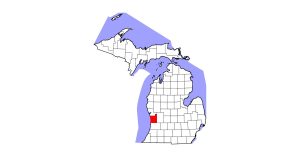COVID’s Impacts, for Better and Worse, on the Horse World

As a member of the welfare committees for both the American Association of Equine Practitioners (AAEP) and the American Veterinary Medical Association (AVMA), Mason has been looking at the ways the pandemic has impacted horses. She shared those observations at the 2021 AAEP Convention, held Dec. 4-8 in Nashville, Tennessee.
Because the virus has affected so many aspects of people’s lives—employment, finances, health, and social connections—the pendulum has been swinging in two directions. Many owners who keep horses at home said they had more time to spend with them during the pandemic. Some were laid off from jobs, others quit or began working from home. However, owners who board their horses elsewhere often found they were spending less time with their horses due to restrictions put in place to prevent COVID-19’s spread. This was cause for frustration and even depression. These owners expressed concern that less frequent exercise would cause obesity in and a greater risk of laminitis for their horses. They also feared criticism from peers via social media for not seeing their horses enough.
A survey of 11,000 horse owners in North America, Great Britain, and Australia showed most equestrians kept riding during the pandemic. It also revealed that they were more cautious, scaling back on jumping, breeding horses, and other activities around the barn they deemed risky. Australians were the exception, carrying on pretty much as they did pre-pandemic. Their biggest fear was a possible feed shortage due to fire and drought.
Although COVID-19 created economic uncertainty, Mason suggested that the Coronavirus Aid, Relief, and Economic Security (CARES) Act might have helped some farms and stables remain operational because they were eligible for no-interest loans. Federal unemployment subsidies also helped owners meet expenses early in the pandemic, as did stimulus checks that went out to nearly everyone in the U.S. What was truly surprising, though, was that more people adopted horses during 2020 than the preceding year, Mason said. However, the trend began to reverse when stimulus payments ended and unemployment rates climbed. By early 2021 horses had begun to come back into shelters.
The rising cost of feed, transportation, and health care were growing concerns for equine rescue organizations. Some faced hard economic choices about which horses to foster or rehabilitate and which ones to euthanize, while the coronavirus put the kibosh on hosting any in-person fundraising events.
In addition to the remarkably high adoption rates, equine organizations also saw a surprising drop in the number of horses being confiscated or surrendered in 2020. The unusually low number might reflect a lack of law enforcement oversight rather than an actual decline in welfare cases, Mason suggested. For health and safety reasons, welfare investigators didn’t do as many site visits. As investigations reconvene, she predicts more horses will need to be rehomed, and more cases will find their way onto court dockets.
Horses need to eat large amounts of feed every day, and transportation and supply chain worries prompted many owners and breeders to cull stock and breed fewer mares in 2020 as they waited to see how the pandemic played out. The effect of this depopulation effort will likely be felt with fewer horses offered at the sales in 2022, Mason speculated. The upside for sellers will be higher horse prices.
Racing, training, and competitive show operations were also impacted as tracks and horse show facilities were shuttered in 2020. Thoroughbred racing saw a 24% decline in fatalities per 1,000 starts during this time. When juveniles were sent back to tracks, however, an unanticipated consequence from the break in training was an increase in catastrophic injuries. Young horses had not had enough track time to strengthen and remodel bones for high-speed work. At one racecourse in New York, eight of 18 fatalities were horses that had never raced, she reported.
Tracks and horse show venues were hit hard financially, and many events were canceled. When the betting public couldn’t attend races in person, wagering moved online. This benefited some racecourses but was especially detrimental to smaller tracks, having a ripple effect on purses, horses, and personnel. To keep officials safe from COVID-19 exposure, fewer equine drug tests were being done, which Mason said was less-than-ideal for ensuring the welfare of horses headed to the starting gates.
One final bright spot for equestrians during a challenging time was the passage of the Great American Outdoors Act in 2020. The legislation supports public open spaces and encourages people to get outdoors. For those who venture out with a horse, so much the better. Ultimately, Mason said, the horses and owners who fared best during the darkest days of the pandemic were those who spent the most time together.
Written by:
Betsy Lynch
Related Articles
Stay on top of the most recent Horse Health news with















